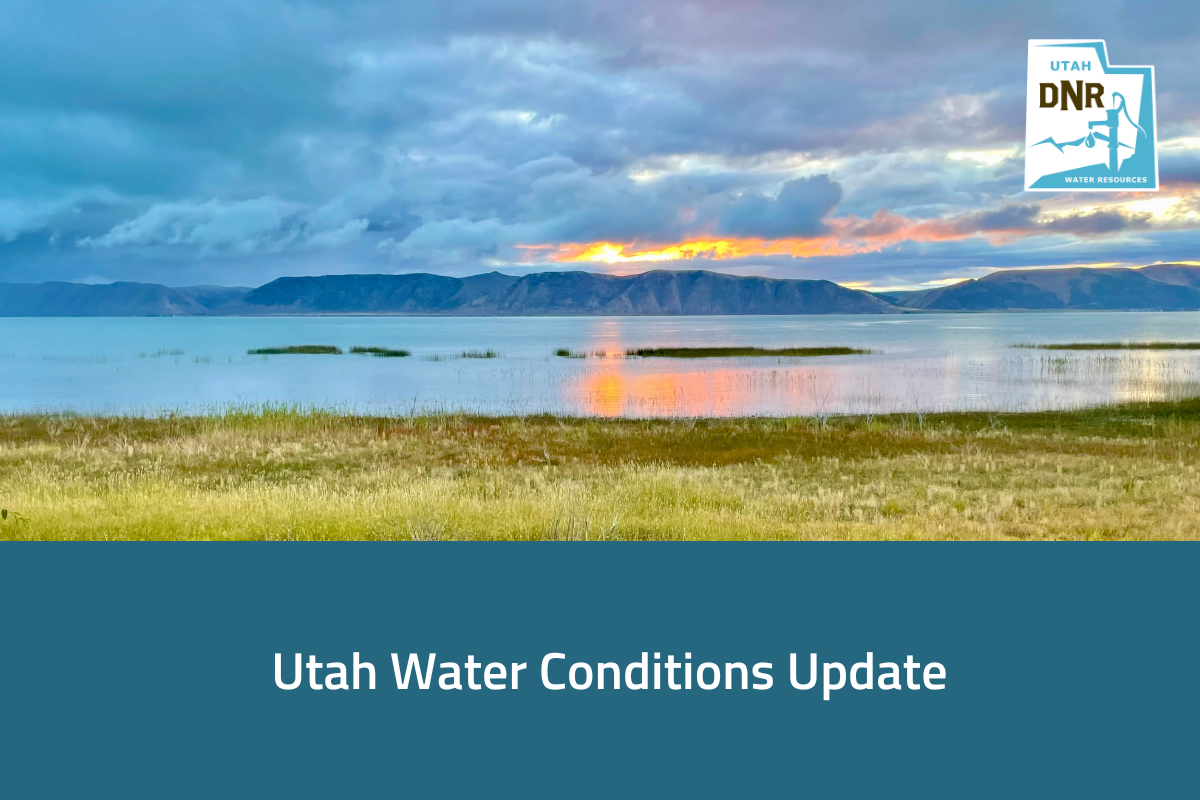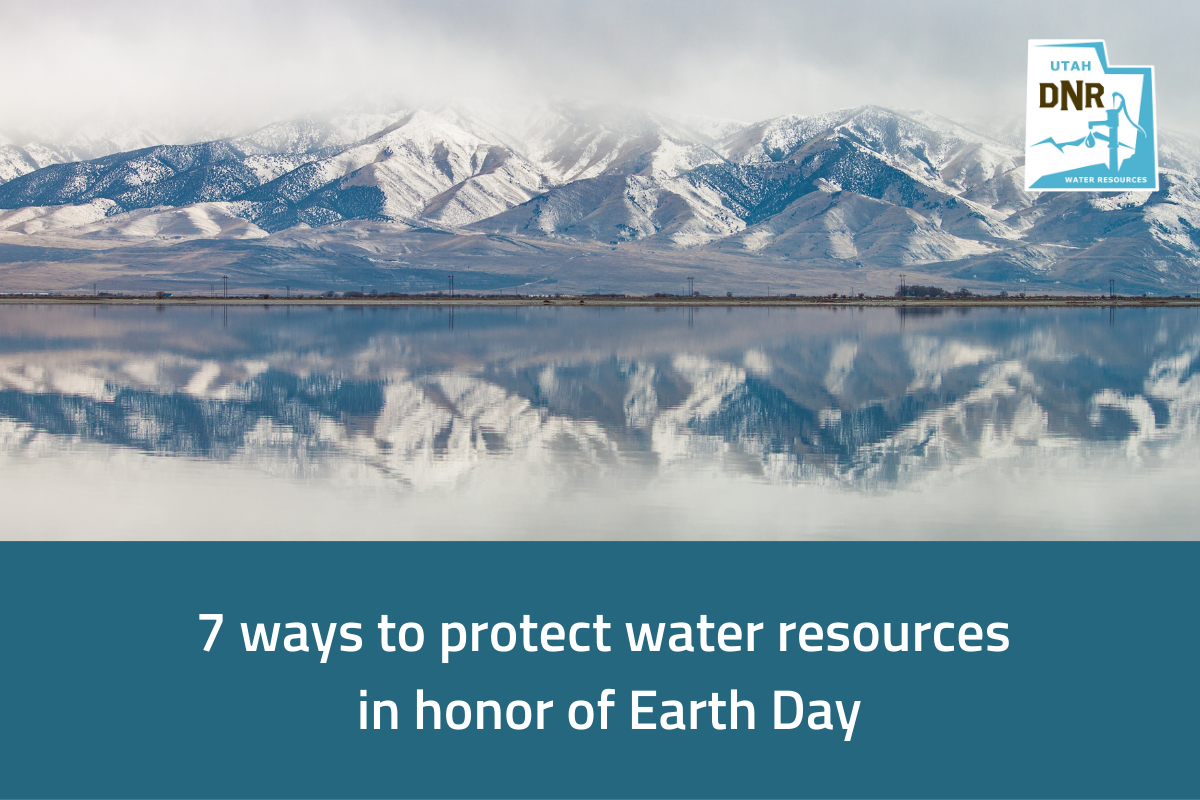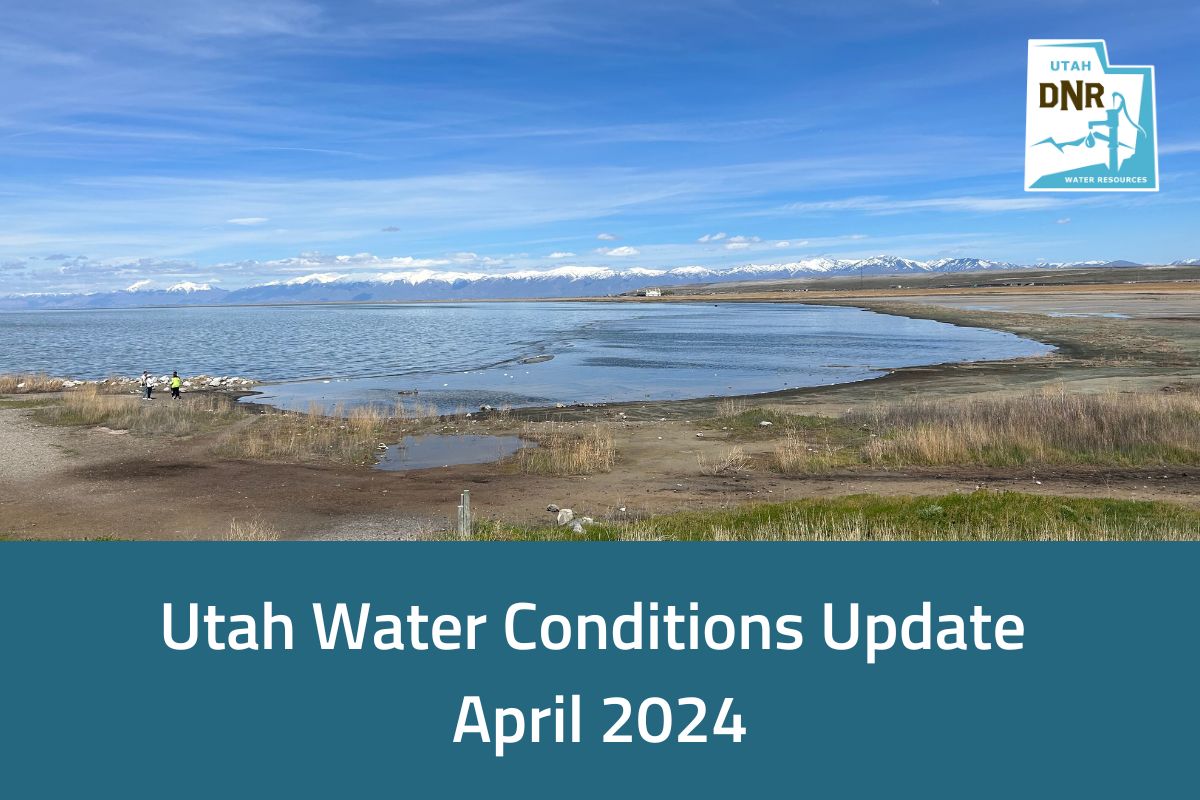SALT LAKE CITY (Oct. 12, 2023) – As the new water year begins, Utah reservoirs and soil moisture are in a good spot as water managers start tracking data such as snow accumulation, stream flows and soil moisture.
“A water year, spanning from Oct. 1 to Sept. 30, aligns with natural precipitation and snowmelt patterns, providing a holistic view of our water resources,” Candice Hasenyager, the director of the Division of Water Resources, said. “This timeframe allows water managers to assess reservoir levels, monitor precipitation patterns and plan strategically for the diverse water needs of our communities.”
Despite ongoing challenges, there has been a notable improvement in drought conditions. Currently, only 7% of Utah is experiencing moderate drought, a significant improvement from last year when 95% of the state faced severe drought.
“I would like to thank everyone who has stepped up and conserved after our record-breaking water year,” Hasenyager said. “Our Weekly Lawn Watering Guide is now recommending zero irrigations for most of the state. So if you haven’t already, revisit your watering schedule and see if it’s time to shut it off for the year. As the seasons change and we spend more time indoors, take time to check for leaks and look for other ways to save water.”
Highlights from the 2023 Water Year (Data compiled by NRCS in their latest Utah Climate and Water Report): While we keep fingers crossed for a bountiful snowpack season this winter, it is worthwhile to look back and celebrate the amazing water year Utah just experienced. Listed below are some highlights:
Snowpack
1. Statewide snow water equivalent (SWE) peaked on April 8 at 30.0”, which was 216% of normal. This was a new record for Utah, beating the previous record from SNOTEL data (26.0” in 1983) as well as the long-term snow course record (28.8” in 1952), making 2023 the all-time high for SWE going back to the beginning of our historical measurements which began in the 1920s.
2. Nine of Utah’s 16 major watersheds reached record-high levels of SWE.
3. The SNOTEL site with the highest peak SWE was Ben Lomond Peak at 82.8”.
4. The best months for statewide snow accumulation were December, January and March. Utah received so much snow in March (8.6” SWE) that we broke the monthly record.
5. Snowpack timing was favorable: the snowpack peak was several weeks late for around a third of Utah’s SNOTEL sites, and over a month late for three sites. Similarly, melt-out dates were late for the majority of sites in the state.
Precipitation
1. Utah ended the 2023 water year on Sept. 30 with 39.7” of accumulated precipitation at our SNOTEL sites, which was 136% of normal and around the 83rd percentile. Our water year total was 10.4” greater than the 2022 water year.
Soil moisture
1. As of mid May, statewide soil moisture conditions measured at Utah’s SNOTEL sites were setting new records. Peak saturation reached 83% which was a record for any date since the sensors were installed at a large number of sites in the early 2000s.
2. At the end of the water year, soils were 42% saturated, which was 114% of normal.
Reservoirs
1. All of Utah’s major basins increased their storage during the 2023 water year, with the largest proportionate increases in the Beaver and San Pitch watersheds. In early July, several basins were at their capacity for reservoir storage (Weber-Ogden, Price, Southeastern Utah, and Beaver watersheds).
Streamflow
1. Streamflow measured from April through July was well above normal in all major basins (a welcome change from the snowmelt runoff in 2022 which was below normal in all basins). The Sevier watershed and Southwestern Utah fared best with greater than 400% of normal flow during that four month period. Other watersheds (Weber-Ogden, Tooele Valley-Vernon Creek, Provo-Utah Lake-Jordan, Duchesne, Price-San Rafael, and Beaver) had greater than 200% of normal flow. While still above normal, the Escalante-Paria had the lowest percentage (121% normal).
2. According to the U.S. Geological Survey, in late May 84% of Utah’s streamgages were reporting above normal flow levels, with 43% at “much above normal” and 6% setting new record highs. Statewide, Utah ended the water year just above the 75% percentile for cumulative runoff.
To encourage water conservation among residents, the Department of Natural Resources continues to promote initiatives such as the Agricultural Optimization Program for farmers and SlowtheFlow.org for residents. These programs aim to educate and incentivize water-saving practices, ensuring Utahns become more drought resilient and prepare for future conditions.
# # #




